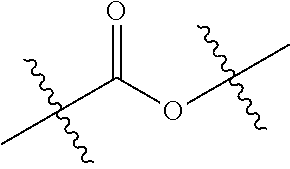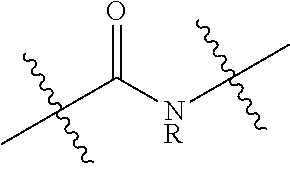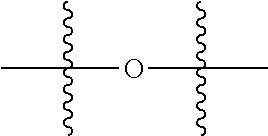Polyester polyols from recycled polymers and waste streams
a polyol and polymer technology, applied in the field of polyols, can solve the problems of difficult manufacturing of polyols suitable for high-quality polyurethanes from recycled materials, increase in natural resources and energy consumption, and increase in greenhouse gases and pollutants, etc., to achieve the effect of reducing the number of hydroxyls, viscosity and appearan
- Summary
- Abstract
- Description
- Claims
- Application Information
AI Technical Summary
Benefits of technology
Problems solved by technology
Method used
Image
Examples
examples
[0261]The following examples further describe and demonstrate embodiments within the scope of the present invention. The Examples are given solely for purpose of illustration and are not to be construed as limitations of the present invention, as many variations thereof are possible without departing from the spirit and scope of the invention.
[0262]“Recycle content” as used herein (wt. %) is determined by combining the masses of recycled glycol, recycled aromatic polyacid source, recycled hydrophobe, and recycled digestible polymer, and dividing this sum by the total mass of reactants, and then multiplying the result by 100.
[0263]Hydroxyl numbers and acid numbers are determined by standard methods (ASTM E-222 and ASTM D3339, respectively). Viscosities are measured at 25° C. using a Brookfield DV-III Ultra rheometer with spindle #31 at 25%, 50%, and 75% torque, with 50% torque being the usual torque setting. Alternatively, depending on the viscosity of the sample, viscosities can als...
example i
Preparation of Digested Intermediate from an Aromatic Polyacid Source (Recycled PET)
[0265]The following relative amounts of materials were used—(1.0 mole rPET / 2.8 mole PG / 0.46 mole dimer fatty acid). A 5 liter reactor equipped with an overhead mixer, condenser, heating mantle, thermocouple, and nitrogen inlet was charged with titanium tetrabutoxide (0.1% by wt.), recycled polyethylene terephthalate pellets (960 g, 5 moles), and propylene glycol (1065.2 g, 14 moles). The mixture was heated with stirring to about 130° C. Stirring was then set to 60 rpm, and heating continued until the reactor contents reached 200° C. The mixture was heated until no particles of recycled PET remained (about 4 hr). When the digestion reaction was considered complete, the mixture was cooled to about 100° C. Dimer fatty acid (Croda Pripol™1017, 1311.7 g, 2.3 moles) was added, while the mixing rate was increased to 200 rpm. When the addition was complete, a Dean-Stark trap was introduced between the reacto...
example ii
Preparation of Digested Intermediate from an Aromatic Polyacid Source (Recycled PET Carpet)
[0266]A 2000 mL resin kettle equipped with an overhead mixer, Vigreux column, short path condenser head with distillation collection flask, heating mantle, thermocouple, and nitrogen inlet was charged with 152.80 g of recycled propylene glycol, 142.80 g of recycled PET polyester carpet including polyolefin backing, calcium carbonate filler, and latex adhesive, assuming an approximate PET composition of 90% of the carpet, and 0.58 g titanium tetrabutoxide (˜0.1% by wt.) and heated with a stirring rate of 150 RPM and nitrogen flow at 0.3SCFH to 200° C. for 20 hours. After about 5 hours, the recycled PET polyester textile had completely dissolved and appeared to be completely digested. The mixture was heated overnight to ensure no particles of recycled PET carpet remained. The mixture was then cooled to about 100° C. 190.88 g of Dimer Fatty Acid (Croda Pripol 1017) was added, while the mixing rat...
PUM
| Property | Measurement | Unit |
|---|---|---|
| molar ratio | aaaaa | aaaaa |
| weight percent | aaaaa | aaaaa |
| temperature | aaaaa | aaaaa |
Abstract
Description
Claims
Application Information
 Login to View More
Login to View More - R&D
- Intellectual Property
- Life Sciences
- Materials
- Tech Scout
- Unparalleled Data Quality
- Higher Quality Content
- 60% Fewer Hallucinations
Browse by: Latest US Patents, China's latest patents, Technical Efficacy Thesaurus, Application Domain, Technology Topic, Popular Technical Reports.
© 2025 PatSnap. All rights reserved.Legal|Privacy policy|Modern Slavery Act Transparency Statement|Sitemap|About US| Contact US: help@patsnap.com



